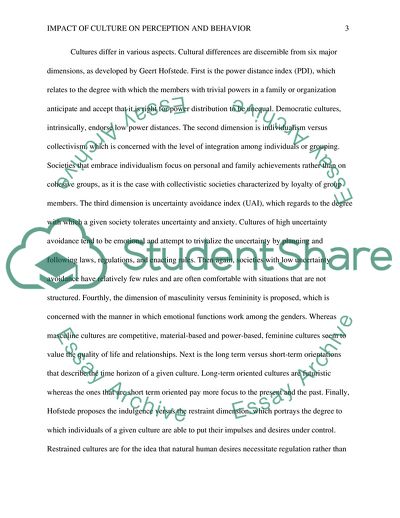Cite this document
(Impact of Culture on Perception and Behavior Essay Example | Topics and Well Written Essays - 1750 words, n.d.)
Impact of Culture on Perception and Behavior Essay Example | Topics and Well Written Essays - 1750 words. https://studentshare.org/sociology/1837222-the-impact-of-culture-on-perception-and-behaviour
Impact of Culture on Perception and Behavior Essay Example | Topics and Well Written Essays - 1750 words. https://studentshare.org/sociology/1837222-the-impact-of-culture-on-perception-and-behaviour
(Impact of Culture on Perception and Behavior Essay Example | Topics and Well Written Essays - 1750 Words)
Impact of Culture on Perception and Behavior Essay Example | Topics and Well Written Essays - 1750 Words. https://studentshare.org/sociology/1837222-the-impact-of-culture-on-perception-and-behaviour.
Impact of Culture on Perception and Behavior Essay Example | Topics and Well Written Essays - 1750 Words. https://studentshare.org/sociology/1837222-the-impact-of-culture-on-perception-and-behaviour.
“Impact of Culture on Perception and Behavior Essay Example | Topics and Well Written Essays - 1750 Words”. https://studentshare.org/sociology/1837222-the-impact-of-culture-on-perception-and-behaviour.


